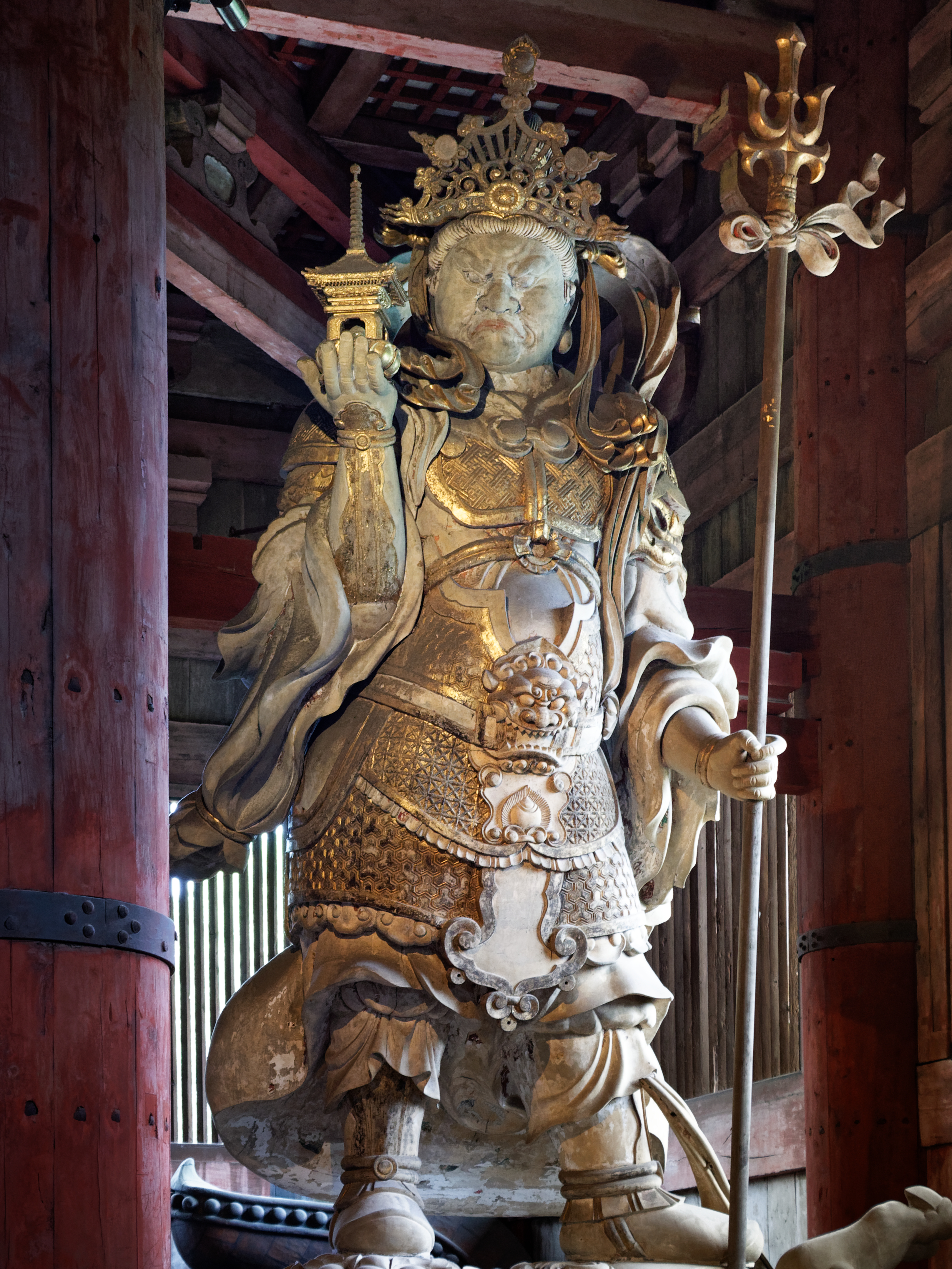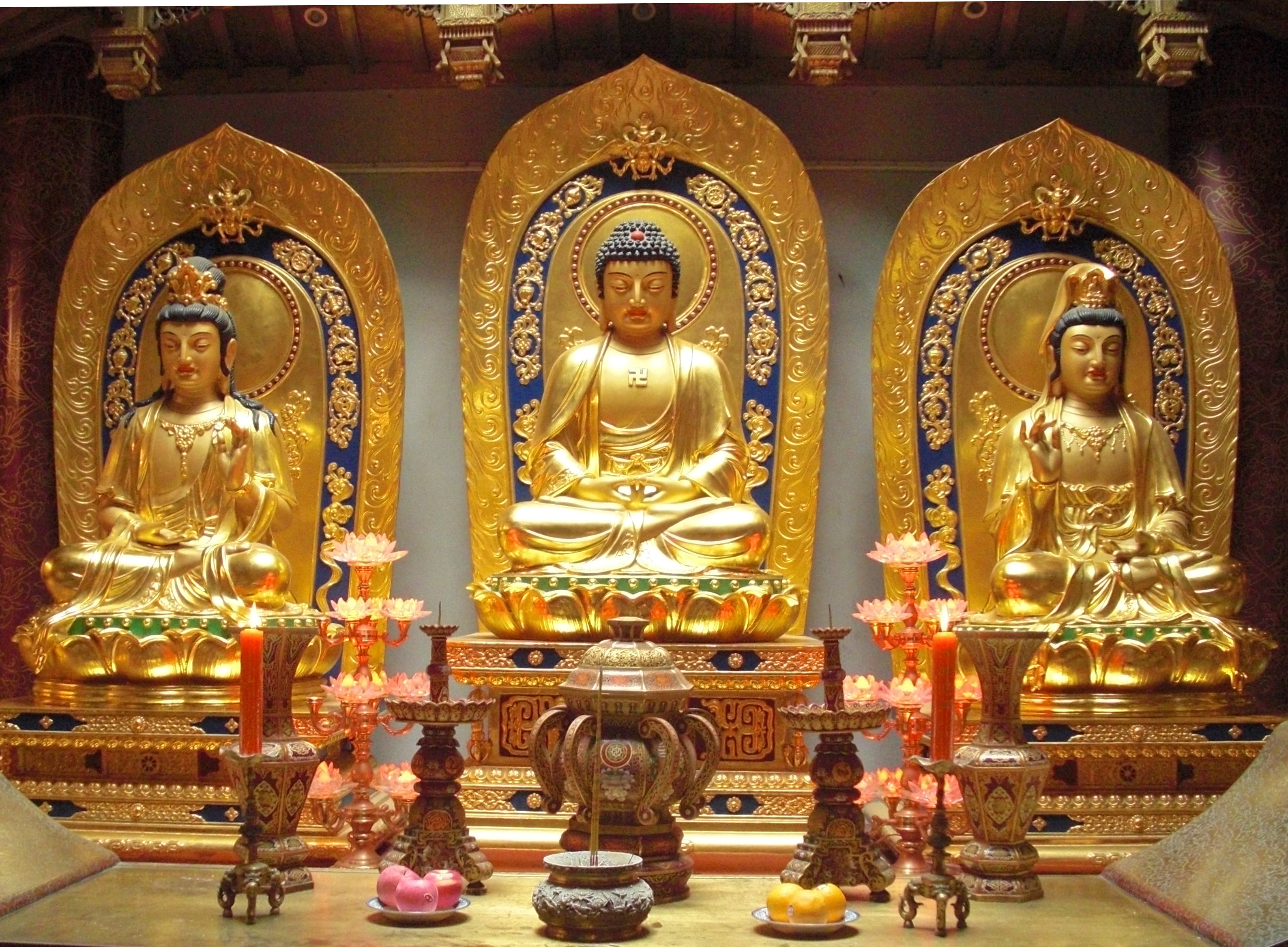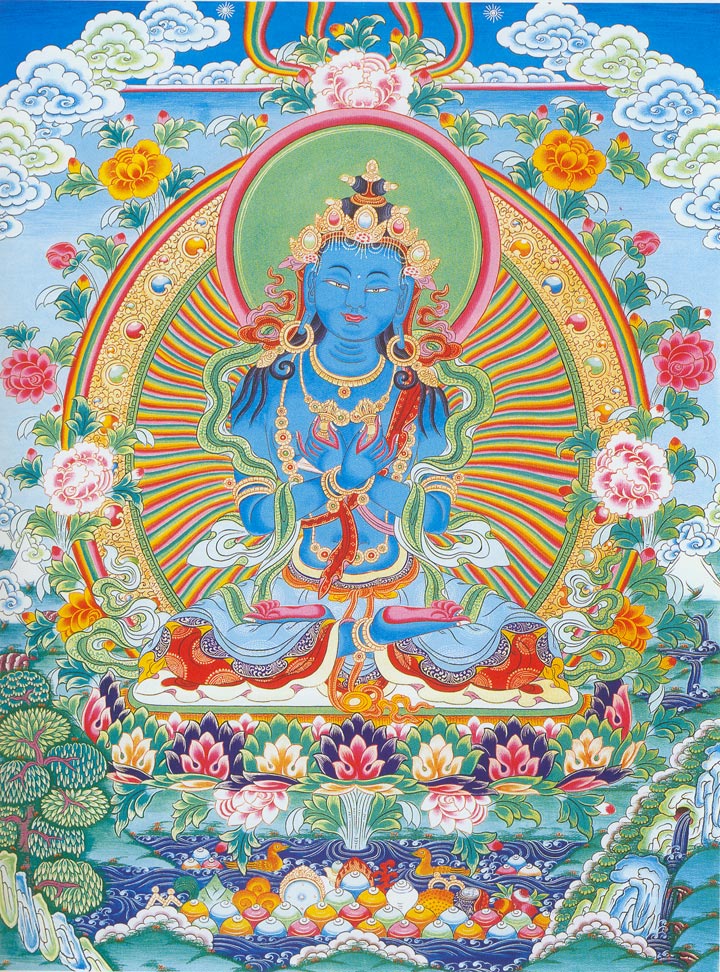|
Buddhist Deities
Buddhism includes a wide array of divine beings that are venerated in various ritual and popular contexts. Initially they included mainly Indian figures such as devas, asuras and yakshas, but later came to include other Asian spirits and local gods (like the Burmese ''nats'' and the Japanese ''kami''). They range from enlightened Buddhas to regional spirits adopted by Buddhists or practiced on the margins of the religion. Buddhists later also came to incorporate aspects from the countries to which it spread. As such, it includes many aspects taken from other mythologies of those cultures. Buddhas A Buddha is a being who is fully awakened and has fully comprehended the Four Noble Truths. In the Theravada tradition, while there is a list of acknowledged past Buddhas, the historical Buddha Sakyamuni is the only Buddha of our current era and is generally not seen as accessible or as existing in some higher plane of existence. The Pali literature of the Theravāda tradi ... [...More Info...] [...Related Items...] OR: [Wikipedia] [Google] [Baidu] |
Pure Land
Pure Land is a Mahayana, Mahayana Buddhist concept referring to a transcendent realm emanated by a buddhahood, buddha or bodhisattva which has been purified by their activity and Other power, sustaining power. Pure lands are said to be places without the sufferings of Saṃsāra, samsara and to be beyond the Trailokya, three planes of existence. Many Mahayana Buddhists aspire to be reborn in a Buddha's pure land after death. The term "Pure Land" is particular to East Asian Buddhism (). In Sanskrit Buddhist literature, Sanskrit Buddhist sources, the equivalent concept is called a buddha-field () or more technically a pure buddha-field (). It is also known by the Sanskrit term (Buddha land).Keenan, John P. ''The Interpretation of the Buddha Land'', p. xiii. BDK America Inc. 2002. In Tibetan Buddhism meanwhile, the term "pure realms" ( Wylie transliteration, Wylie: ) is also used as a synonym for buddhafield. The various traditions that focus on attaining Rebirth (Buddhism), reb ... [...More Info...] [...Related Items...] OR: [Wikipedia] [Google] [Baidu] |
Sukhavati
Sukhavati ( IAST: ''Sukhāvatī''; "Blissful"; Chinese: 極樂世界, lit. "realm of ultimate bliss") is the pure land (or buddhafield) of the Buddha Amitābha in Mahayana Buddhism. Sukhavati is also called the Land of Bliss or Western Pure Land and is the most well-known of the Mahayana Buddhist pure lands due to the popularity of Pure Land Buddhism in East Asia. Sukhavati is also an important postmortem goal for Tibetan Buddhists, and is a common buddhafield used in the practice of phowa ("transference of consciousness at the time of death"). Sukhavati was widely depicted in Mahayana Buddhist art and remains an important theme in Buddhist art. Different traditions understand the nature of Sukhavati differently. The Pure Land Buddhist traditions often sees it as a Samboghakaya pure land (this was the view of Shandao), while other traditions, like some Tibetan Buddhists, see it as a nirmanakaya Pure Land. Furthermore, in Chinese Buddhism, there are two views on Sukhava ... [...More Info...] [...Related Items...] OR: [Wikipedia] [Google] [Baidu] |
Pure Land Buddhism
Pure Land Buddhism or the Pure Land School ( zh, c=淨土宗, p=Jìngtǔzōng) is a broad branch of Mahayana, Mahayana Buddhism focused on achieving rebirth in a Pure land, Pure Land. It is one of the most widely practiced traditions of East Asian Buddhism, Buddhism in East Asia. It is also known as the "Lotus School" (Chinese language, Chinese: 蓮宗; pinyin: ''Liánzōng'') in China or the "Nianfo, Nembutsu school" in Japan. East Asian Pure Land mainly relies on three main Mahayana sutras, Mahayana scriptures: the ''Longer Sukhāvatīvyūha Sūtra, Sutra of Amitayus'', the ''Amitāyus Contemplation Sūtra, Contemplation Sutra'' and the ''Shorter Sukhāvatīvyūha Sūtra, Amitabha Sutra''. The Pure Land tradition is primarily focused on achieving rebirth in a Buddhahood, Buddha's "pure land", a superior place to spiritually train for full Buddhahood, where one can meet a Buddha face to face and study under them without any of the distractions or fears of our world.Williams, Pau ... [...More Info...] [...Related Items...] OR: [Wikipedia] [Google] [Baidu] |
Abhirati
Abhirati (lit. "The Joyous") is the eastern pure land associated with Akshobhya in Mahayana Buddhism. It is described in the '' Akṣobhyatathāgatasyavyūha Sūtra'' (Taishō Tripiṭaka, 313), which was first translated into Chinese by Lokakṣema by 186 CE. Although Abhirati emerged in the earliest era of Mahayana thought, Abhirati is far less widely known than Sukhāvatī, the pure land of Amitābha that has been the sole focus of Pure Land Buddhism since the Tang dynasty The Tang dynasty (, ; zh, c=唐朝), or the Tang Empire, was an Dynasties of China, imperial dynasty of China that ruled from 618 to 907, with an Wu Zhou, interregnum between 690 and 705. It was preceded by the Sui dynasty and followed .... References Bibliography * * Pure lands {{Mahayana-stub ... [...More Info...] [...Related Items...] OR: [Wikipedia] [Google] [Baidu] |
Akshobhya
Akshobhya (, ''Akṣobhya'', "Immovable One"; ) is one of the Five Wisdom Buddhas, a product of the Adibuddha, who represents consciousness as an aspect of reality. By convention he is located in the east of the Diamond Realm and is the lord of the Eastern Pure Land Abhirati ('The Joyous'). His consort is Lochanā and he is normally accompanied by two elephants. His color is blue-black and his attributes include a bell, three robes, and staff, as well as a jewel, lotus, prayer wheel, and sword. He has several emanations. Textual history and doctrine Akshobhya appears in the Akṣobhyatathāgatasyavyūha Sūtra ( zh, t=阿閦佛國經, p=Āchùfó Guó Jīng, links=no), which was translated during the second century CE and is among the oldest known Mahayana or Pure Land texts. According to the scripture, a monk wished to practice the Dharma in the eastern world of delight and made a vow not to harbor anger or malice towards any being until he achieved enlightenment. He d ... [...More Info...] [...Related Items...] OR: [Wikipedia] [Google] [Baidu] |
Akaniṣṭha
In classical Buddhist Cosmology, ''Akaniṣṭha'' (Pali: ''Akaniṭṭha,'' meaning "Nothing Higher", "Unsurpassed") is the highest of the Pure Abodes, and thus the highest of all the form realms. It is the realm where devas like Maheśvara live. In Mahayana Buddhism, Akaniṣṭha is also a name for the Pure Land (Buddhafield) of the Buddha Vairocana. This is also the setting of the '' Ghanavyūha Sūtra.'' Tibetan Buddhism, Akaniṣṭha (Tib. '''og min)'' often describes three Akaniṣṭhas: # The Ultimate Akaniṣṭha, the formless state of dharmakaya, the dharmadhatu, i.e. the ultimate reality. # The Densely Arrayed Akaniṣṭha (Tib. '''Og min rgyan stug po bkod pa''; Skt. ''Ghanavyūhakaniṣṭha''), or the "Symbolic Akaniṣṭha" which is the realm of sambhogakaya. "Ghanavyūha Akaniṣṭha", refers to the pure Saṃbhogakāya Buddha field out of which emanate all Nirmāṇakāya Buddhas and Buddhafields such as Sukhāvati. It is the supreme Buddhafield in whic ... [...More Info...] [...Related Items...] OR: [Wikipedia] [Google] [Baidu] |
Shingon Buddhism
is one of the major schools of Buddhism in Japan and one of the few surviving Vajrayana lineages in East Asian Buddhism. It is a form of Japanese Esoteric Buddhism and is sometimes called "Tōmitsu" (東密 lit. "Esoteric uddhismof Tō-ji"). The word ''shingon'' is the Japanese reading of the Chinese word ('), which is the translation of the Sanskrit word mantra. The Zhēnyán lineage was founded in China (c. 7th–8th centuries) by Indian vajrācāryas (esoteric masters) like Śubhakarasiṃha, Vajrabodhi and Amoghavajra. These esoteric teachings would later flourish in Japan under the auspices of a Buddhist monk named Kūkai (, 774–835), who traveled to Tang China and received these esoteric transmissions from a Chinese master named Huiguo (746–805). Kūkai established his tradition at Mount Kōya (in Wakayama Prefecture), which remains the central pilgrimage center of Shingon Buddhism. The practice of the Shingon school stresses that one is able to atta ... [...More Info...] [...Related Items...] OR: [Wikipedia] [Google] [Baidu] |
Chinese Esoteric Buddhism
Chinese Esoteric Buddhism refers to traditions of Tantra and Vajrayana, Esoteric Buddhism that have flourished among the Chinese people. The Tantric masters Śubhakarasiṃha, Vajrabodhi and Amoghavajra, established the Esoteric Buddhist ''Zhenyan'' (, "true word", "mantra") tradition from 716 to 720 during the reign of Emperor Xuanzong of Tang. It employed mandalas, mantras, mudras, abhisheka, abhiṣekas, and deity yoga. The Zhenyan tradition was transported to Japan as Tendai and Shingon Buddhism by Saichō and Kūkai, as well as influencing Korean Buddhism and Vietnamese Buddhism. The Song dynasty (960–1279) saw a second diffusion of Esoteric texts. Esoteric Buddhist practices continued to have an influence into the late imperial period and Tibetan Buddhism was also influential during the Yuan dynasty period and beyond. In the Ming dynasty (1368–1644) through to the modern period, esoteric practices and teachings became absorbed and merged with the other Chinese Buddhist tradi ... [...More Info...] [...Related Items...] OR: [Wikipedia] [Google] [Baidu] |
Huayan
The Huayan school of Buddhism (, Wade–Giles: ''Hua-Yen,'' "Flower Garland," from the Sanskrit "''Avataṃsaka''") is a Mahayana Buddhist tradition that developed in China during the Tang dynasty (618-907).Yü, Chün-fang (2020). ''Chinese Buddhism: A Thematic History'', p. 160. University of Hawaii Press. The Huayan worldview is based primarily on the '' Buddhāvataṃsaka Sūtra'' ( zh, t=華嚴經, p=Huáyán jīng, ''Flower Garland Sutra'') as well as on the works of Huayan patriarchs, like Zhiyan (602–668), Fazang (643–712), Chengguan (738–839), Zongmi (780–841) and Li Tongxuan (635–730). Another common name for this tradition is the Xianshou school (''Xianshou'' being another name for patriarch Fazang).Hammerstrom, Erik J. (2020). ''The Huayan University network: the teaching and practice of Avataṃsaka Buddhism in twentieth-century China'', chapter 1. Columbia University Press. The Huayan School is known as Hwaeom in Korea, Kegon in Japan and Hoa Nghi ... [...More Info...] [...Related Items...] OR: [Wikipedia] [Google] [Baidu] |
Vairocanābhisaṃbodhi Sūtra
The ''Vairocanābhisaṃbodhi Sūtra'' (''Vairocana, Vairocana’s Awakening Sutra'', ), also known as the ''Mahāvairocana Tantra'' (; ; also known as 大日經 :zh-tw:大日經, ''Da Ri Jing'') is an important Vajrayana Buddhist text composed before 674 CE.Silk, Jonathan A. (editor) ''Brill’s Encyclopedia of Buddhism Volume I: Literature and Languages,'' p. 382. The Indian tantric master Buddhaguhya (Floruit, fl. c.700 CE) classified the text as a caryātantra, and in Tibetan Buddhism it is still considered to be a member of the Classes of Tantra in Tibetan Buddhism, carya classification. In Japan where it is known as the ''Mahāvairocana Sūtra'' (''Daibirushana jōbutsu jinpen kajikyō)'', it is one of two central texts in the Shingon school, along with the ''Vajrasekhara Sutra''. Both are also part of the Tendai school. Though the text is often called a Buddhist Tantras, tantra by later figures (including later Indian commentators), the scripture does not call itself a tan ... [...More Info...] [...Related Items...] OR: [Wikipedia] [Google] [Baidu] |







